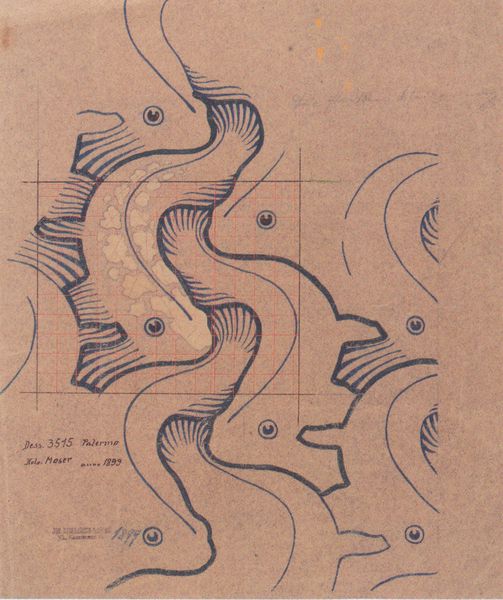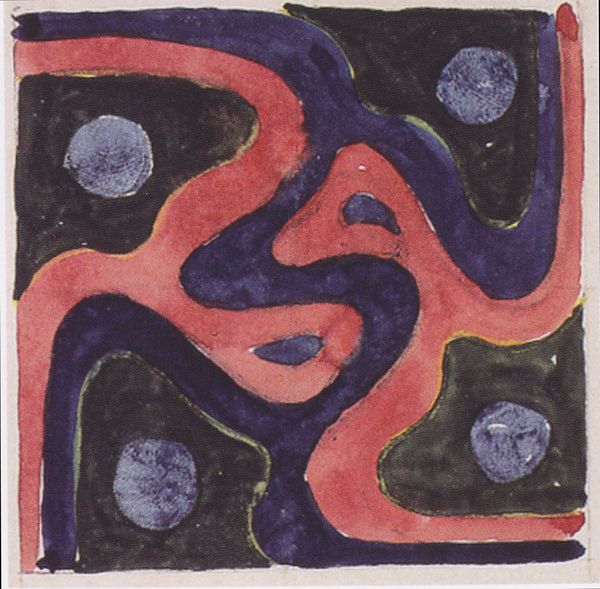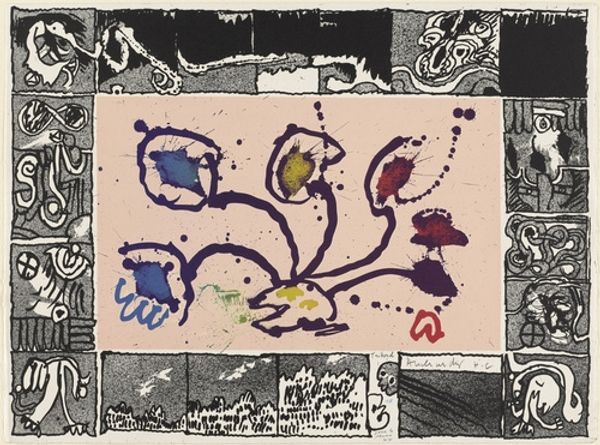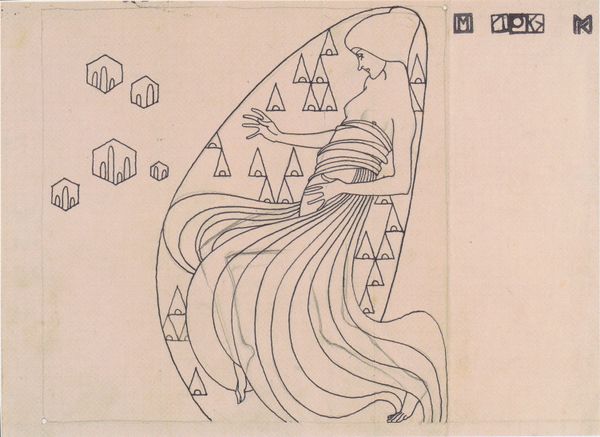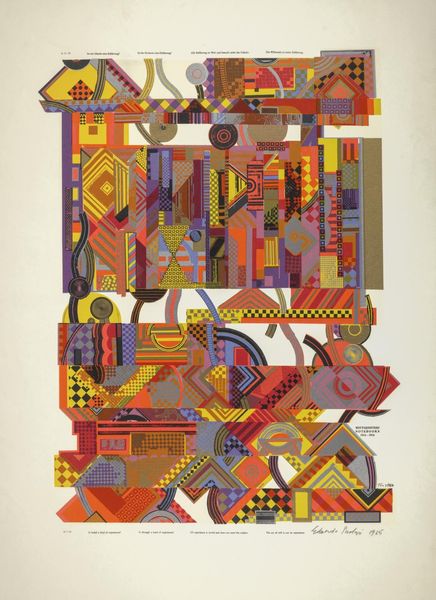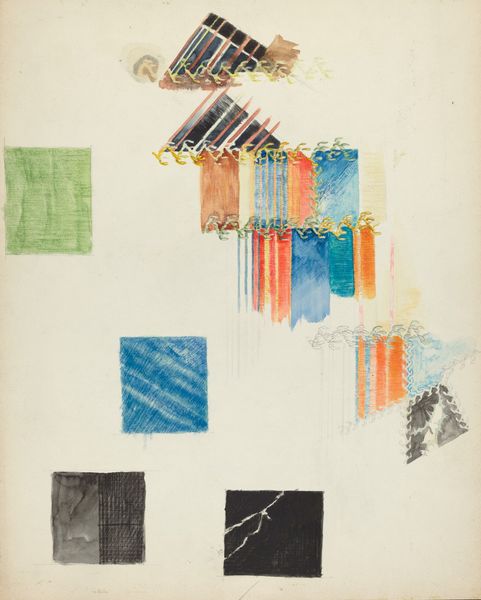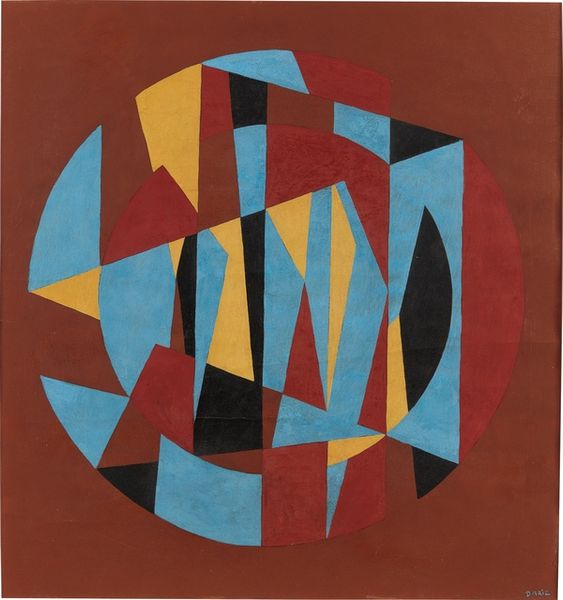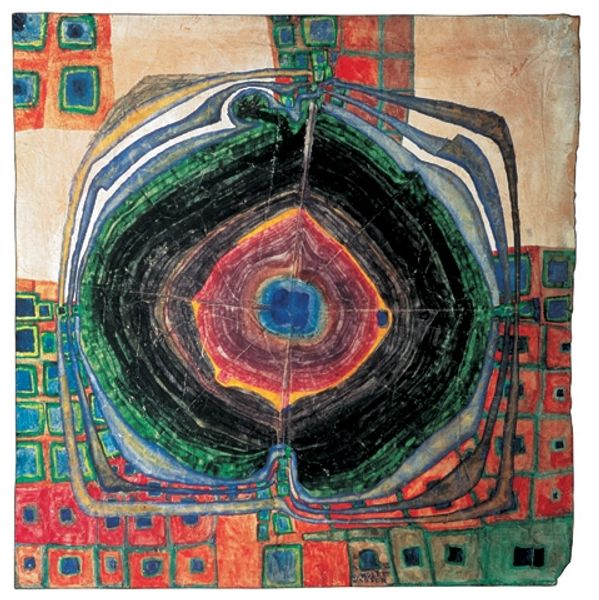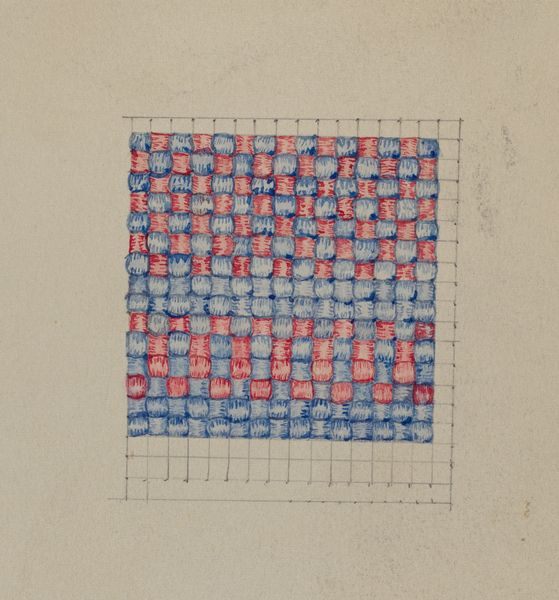
drawing, textile, watercolor
#
drawing
#
art-nouveau
#
water colours
#
textile
#
painted
#
possibly oil pastel
#
watercolor
#
acrylic on canvas
#
geometric
#
watercolor
Dimensions: 57 x 57 cm
Copyright: Public domain
Editor: This is Koloman Moser's "Backhausen Interior Textiles," from 1899. It appears to be a watercolor drawing of a textile design, and I find the pixelated quality quite striking and unusual for the Art Nouveau period. What do you see in this piece, with its bold colours and unusual shapes? Curator: It is an intriguing textile design! The use of geometric forms overlaid on the suggestion of nature – do you notice those swirling shapes suggesting organic growth, yet rendered so mathematically? This tension speaks to the Art Nouveau's complex relationship with industrialization. They are embracing mass production while clinging to natural motifs, imbuing them with emotion and vitality. What do these angular shapes and strong colours evoke for you? Editor: They remind me a bit of early digital art, maybe? Like a distorted floral pattern viewed through a computer screen. Curator: Exactly! It is a proto-digital aesthetic, almost. Remember, this was a time when the boundaries between art, craft, and industry were deliberately blurred. Think of the Wiener Werkstätte, where Moser was a key figure. He aimed to create a total work of art, encompassing everything from architecture to textiles. Editor: So this wasn't just about pretty decoration, but about a whole philosophy? Curator: Precisely. The pattern becomes more than just a surface embellishment; it embodies the cultural anxieties and aspirations of a society on the cusp of modernity. I am also intrigued by that pixelated border; what could that symbolise, in your opinion? Editor: Maybe a boundary between the natural and the manufactured, like you mentioned earlier? It’s really fascinating how much thought went into something that looks, at first glance, just decorative. Curator: Agreed. Looking closer, we see layers of meaning woven into the very fabric of the design. It’s a potent reminder that even seemingly simple patterns can carry significant cultural and psychological weight.
Comments
No comments
Be the first to comment and join the conversation on the ultimate creative platform.
